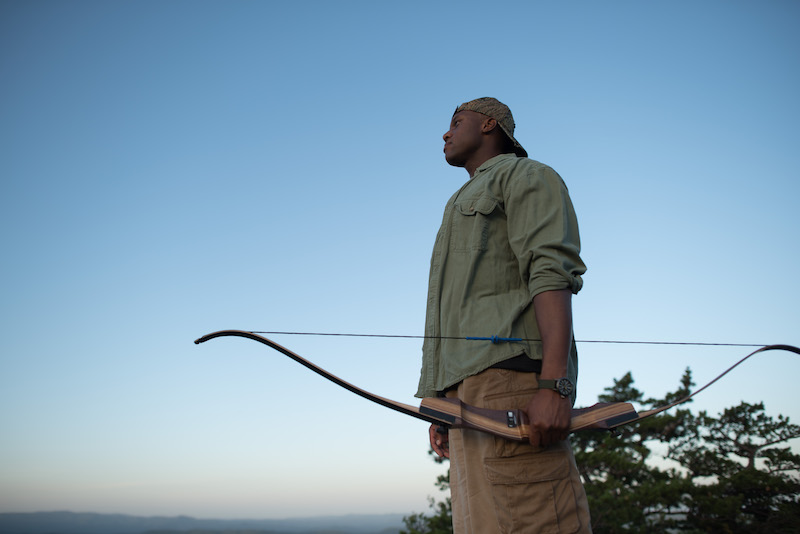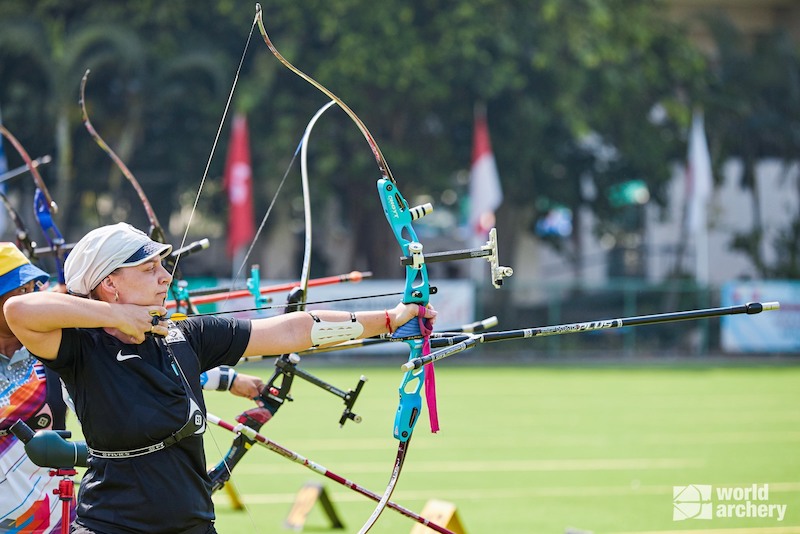One great joy of traditional archery is its variety of bows. They vary in appearance, construction and performance. If you don’t like one traditional bow, try another until finding one that appeals to you.
Although traditional bows differ in appearance, they all consist of a bow with a single bowstring attached at the limb tips. Archers draw that string, increasing the draw weight the farther they pull, and release it by hand.
Let’s review the most popular types of traditional bows.
Recurve

The recurve is the most common traditional bow. When strung, a recurve bow’s limbs curve back toward the archer from the riser and then curve again near the tips so they’re parallel to the riser. One trait differentiating recurves from other traditional bows is that the bowstring sits against the limbs for a couple of inches after looping over the tips into the string grooves.
Recurve bows also have a beefy riser with a sculpted grip that neatly fits the hand. Their limbs are wide and flat, and usually made of layered wood, fiberglass and/or carbon.
Traditional recurve bows often shoot the arrow from a shelf just above the grip. Archers usually put a piece of fur or leather atop the shelf to protect it from arrows passing over it. Other archers, however, don’t like shooting off the shelf. Instead, they add an arrow- rest to the riser just above the shelf.
Recurves are popular for target shooting and bowhunting. They come in lengths from 48 to 72 inches, and draw weights from the teens to 60 pounds.
Some recurves break down into three pieces, with limbs attaching to the riser with bolts. These takedown recurves are popular for traveling, and for archers who like shooting limbs of different draw weights.
Modern Recurve

Modern recurves resemble other traditional recurves in design and appearance, except they have metal risers. All modern recurves are takedown bows, and many use limbs featuring carbon fibers.
Some archers use the modern recurve’s shelf as their arrow-rest, but others add arrow-rests with cushion plungers. The cushion plunger sits atop a spring, which keeps it pressed against the arrow on the rest. This system softens the arrow’s natural flexing when shot, which helps it fly more consistently straight.
Longbow
The Longbow is probably the second-most common traditional bow. Its limbs gradually curve back toward the archer, forming the letter “D” when strung. After looping around the grooved limb tips, the bowstring doesn’t touch the limbs.
Longbows have a fairly straight grip, with little shaping to fit your hand. Their limbs are narrow but thick, and most longbows measure 60 inches or longer.
Because the longbow’s limbs are thick and narrow, it generates more hand shock than does a recurve bow. You’ll feel those vibrations in the grip when shooting the bow.
Like recurves, longbows can be one piece or three-piece takedowns, and they’re usually made from multiple layers of wood and fiberglass. Most have a small cutout in the riser, which serves as an arrow shelf. Others require archers to rest the arrow atop their hand that grips the riser.
Hybrid longbows or flatbows are longbows with wider limbs that don’t continually curve out to their tips. Their limbs curve coming off the riser, but then flatten out to the tips.
Self Bow
The self bow is the most primitive of traditional bows. It’s made from one piece of wood, which is often yew. Because they’re made from one length of wood, self bows look more rustic, with lots of bumps and curves that bowyers don’t remove during construction.
Some self bows have a small arrow shelf cut into the riser, but many require the archer to rest the arrow atop their bow-gripping hand. Some self bows have leather wrapped around their center to serve as a grip. Others have minimal shaping in the wood to create a grip.
Self bows usually measure 60 inches or more, because they need long limbs to generate power from that single piece of wood. These bows are susceptible to changes in heat and humidity, and should never be stored while strung.
Horse Bow

The horse bow is the shortest traditional bow, often measuring less than 30 inches. As the name implies, these bows were built to be shot by horse-mounted archers. They’re maneuverable, fairly light in draw weight; and shot left- or right-handed, usually with the arrow atop the archer’s gripping hand.
Horse bows have a unique design that’s considered to be “double reflex,” which means – when strung – the limbs curve away from the archer at the riser, before curling back toward the archer and then straightening out at the tips. When unstrung, a horse bow almost forms the letter “U.”
Modern horse bows are made mainly from laminated-wood sections. Original horse bows used multiple materials, such as bone, wood and horn; and they were bound together by natural glues and sinew.




